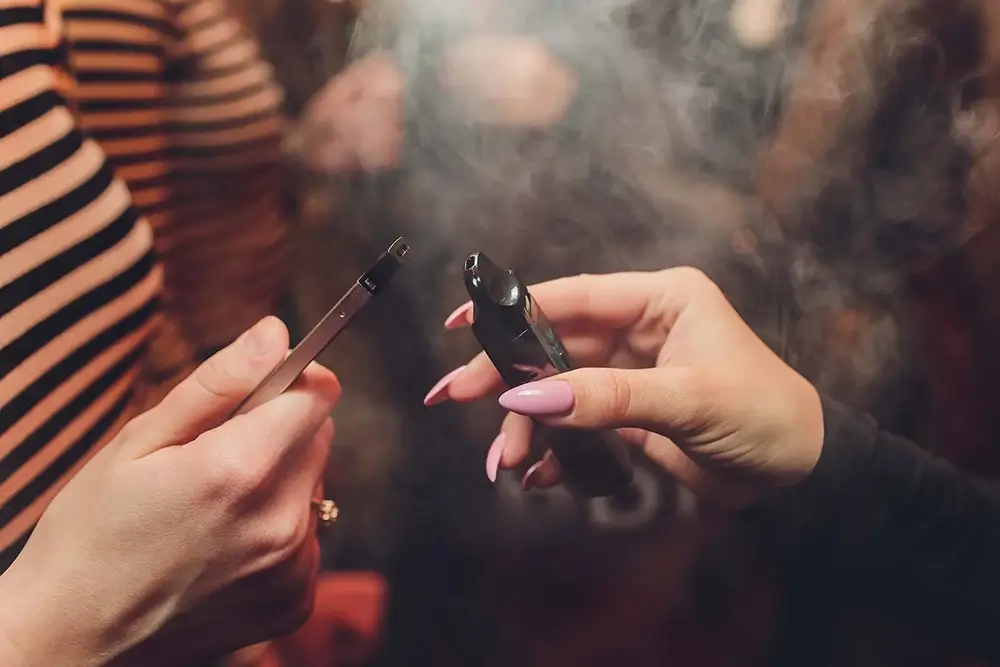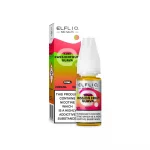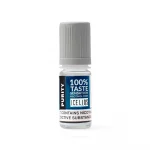The secondhand vapor which is also known as an aerosol is vapor breathed out into the atmosphere by an e-cig user. It lingers in the air long enough so that anyone in the same room would likely breathe in some of the exhaled aerosols. As the name implies, bystanders are not breathing in secondhand smoke because secondhand e-cigarette vapour simply is not smoke.
Smoke is a derivative of combustion. Burning substances like wood, leaves, a building, or any plant material, including tobacco with fire, would produce volatile gasses, carcinogenic solid particles, carbon monoxide, and a variety of dangerous byproducts that in cigarette smoke called tar.
What is Second hand vapor?
Secondhand smoke isn’t as hazardous as inhaling directly from a cigarette (tar), however, regular and lengthy exposure to it is deemed a serious hazard.
Before we proceed to tell you how secondhand vapor is produced, check out the following some of our best collections of vampire vape flavours, disposable CBD vape pen, and iceliqs e-liquid
How is secondhand vapor created?
Secondhand vapor is created by E-cigs heat e-liquid with a small metal coil housed in an atomizer. This heat turns the e-juice into the vapor you see. E-cigarette vapor does not have carbon monoxide particles or tar, and the particles in the aerosol are liquid rather than solid. Harmful chemicals and metals are found in vapor, but only in small quantities. The degree of toxicants is minute compared to those found in smoke, which means the dangers of secondhand vaping are less significant than that of actual cigarettes.
What constitutes a second hand vapor?
When people vape inside a house, the secondhand vapor seen coming out of the mouths of the vapers in the room is a no side stream “vape smoke”. This means as there is sidestream tobacco smoke from cigarettes, there is no constant emission of vapor pouring from the device when it is not being used. The vapor has to be inhaled to produce vapor.
By the time a vaper exhales, the vapor now contains much less of all the substances that were in the inhaled vapor, as most of it is absorbed by the user’s mouth, throat, and lungs. There aren’t enough of the already-scarce toxicants leftover to make secondhand vapor a concern.
Propylene glycol and glycerin (PG and VG) are the two glycols that make up the base of virtually all e-liquids.
Even though the contents inhaled from an e-cig “justify surveillance,” there is so little contamination in exhaled that there is unlikely to be any risk for bystanders.
What is not inhaled falls to the ground quite rapidly. This is called “third-hand nicotine”. It is important to note that the unabsorbed nicotine that lands on floors and furniture makes a case for why you should not vape around kids or pets who might lick the surfaces even though there is not much nicotine left in the settled residue.
Is it dangerous?
The Public Health England in its updated 2018 evidence review, assessed new surveys of passive exposure that had been published since the initial 2015 PHE e-cig report. They surmised that “to date, there have been no identified health risks of passive vaping to bystanders.”
This does not necessarily mean that vapers should feel free to vape everywhere without regard to the wishes of others.
Even if secondhand vaping has not proven harmful to others, the concerns of others should be respected. If visitor objects, vapers should be courteous and thoughtful enough to take the vape outside.
Secondhand vape is best avoided if someone in the home has asthma or another respiratory condition as PG and some flavorings can irritate the airways.
Vapers should also use good judgment and be more cautious when they are around children as children don’t get to make an informed choice about what they breathe.





